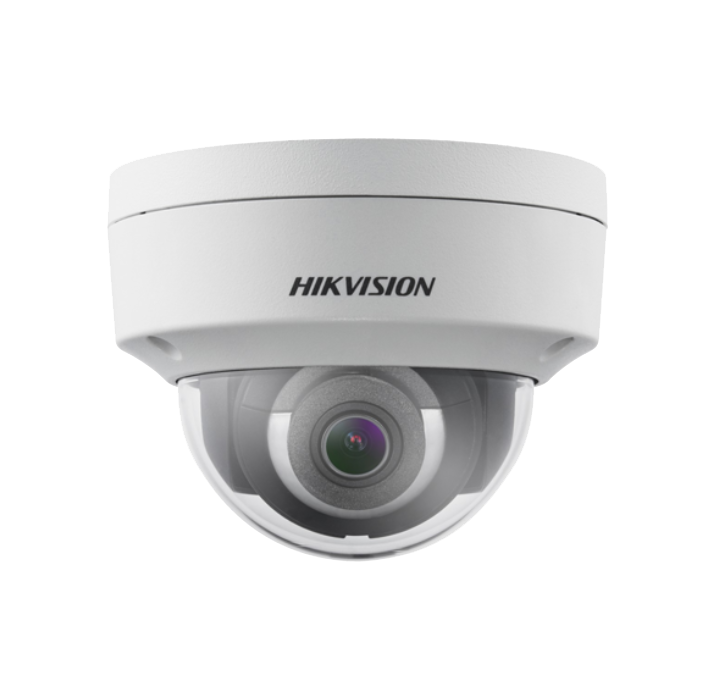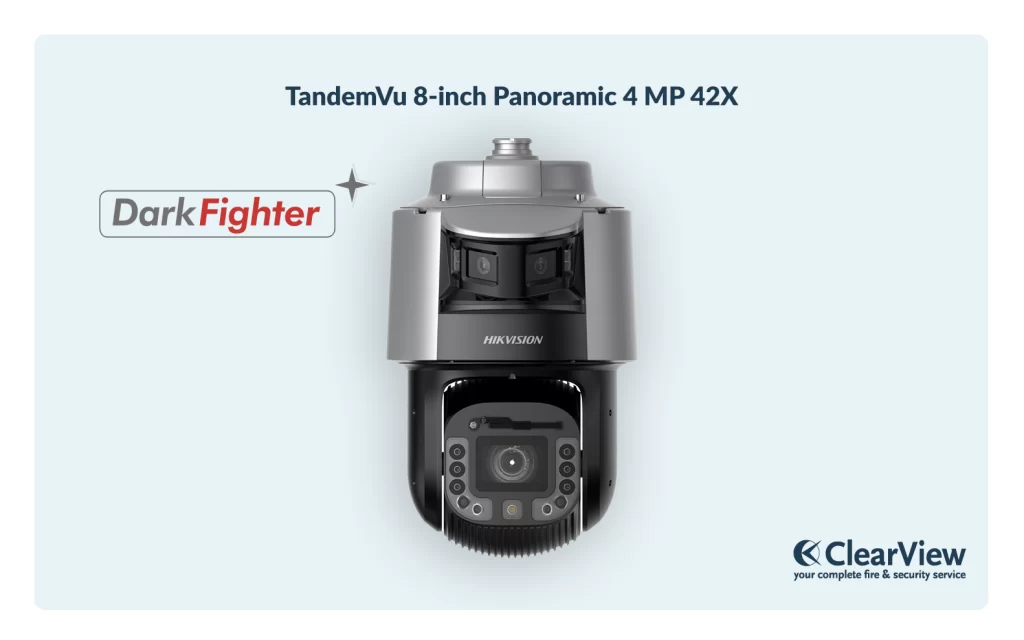CCTV (Closed-Circuit Television) systems have become an inescapable part of our landscape, particularly in cities like London, where estimates suggest that up to 942,500 cameras monitor the streets, businesses and homes across the city. As the demand to secure our assets and protect our families increases, so too does the reliance on surveillance technology.
This guide will explore what CCTV monitoring involves, how it works, and the key components that make up an effective system.

What is CCTV Monitoring
CCTV monitoring is the continuous oversight of a CCTV system by a specialised service provider. These providers, commonly known as Alarm Receiving Centres (ARCs), connect to a site’s security and CCTV systems to monitor them for any signs of unusual activity or alarms.
How it Works
24/7 Monitoring
ARC operators monitor the CCTV feeds around the clock, looking for any activity that could indicate a security breach or other incidents.
Alarm Detection:
The monitoring service is immediately notified if an alarm is triggered—whether by a system fault, human error, or external factors like extreme weather conditions or wild animals.
Verification
Upon receiving an alarm, the ARC first verifies whether it’s genuine. This step is crucial to determining whether the alarm was caused by a real threat or a false alarm.
Response
If the alarm is verified as indicating a real threat, such as an intruder, the ARC takes appropriate action. This could include notifying the property owners, dispatching security personnel, or contacting emergency services.
The Key Components of an Effective CCTV Monitoring System.
A well-designed CCTV monitoring system consists of several key components, each playing a role in capturing, recording, and displaying video footage for security purposes. Here, we’ll introduce you to the key elements of an effective CCTV monitoring system.
Types of Camera
There isn’t a one-size-fits-all approach to CCTV monitoring; your specific needs will determine the best solution for you. In this section we’ll explore some of the most popular cameras for CCTV monitoring. Each type of cameras has unique features making it suitable for different applications, from indoor monitoring to covering large outdoor spaces.

Dome Cameras
As the name suggests, dome cameras are encased in a discreet dome-shaped cover. The cover obscures the camera angle, which alone can deter criminal activity as it can be difficult to see where the camera is pointing. Another feature of the dome casing is they’re often vandal resistant, which can be extremely valuable in areas prone to criminal damage.
Dome cameras are Ideal for indoor and outdoor use and as a result are commonly used in retail spaces, restaurants, and other public areas where aesthetics and discretion are important.

Bullet Cameras
Instantly recognisable by their long, cylindrical shape, bullet cameras make excellent visible deterrents. They are typically mounted to walls or ceilings and can be moved to a point to provide coverage over a specific area.
Bullet cameras are a popular choice due to their ability to withstand harsh weather conditions and can be used indoors or outdoors.

PTZ Cameras
PTZ (Pan, Tilt, Zoom) cameras give monitors the ability to control the pan, tilt, and zoom operations remotely. This functionality allows for a single camera to cover a larger area and focus on specific activities or incidents as needed.
These cameras can rotate (pan), move up and down (tilt), and focus on far-away details (zoom). Some models provide 180-degree or even 360-degree views, which are perfect for comprehensive surveillance.
PTZ cameras are particularly useful in areas where large, open spaces need active monitoring, such as shopping centres, parking lots, and large public venues.
Specialist CCTV Technology
Now we understand the basic types of camera available, it’s important to understand that there is a variety of technologies and functions designed to enhance a standard CCTV camera. For the purpose of this article, we’ll explore some of the most popular technologies utilised in CCTV monitoring.
High-Definition (HD) and Ultra HD Resolution
High-resolution cameras capture video with significantly greater detail than standard models. This enhances their effectiveness in identifying faces, license plates, and other fine details in surveillance footage.
Both HD and Ultra HD cameras ensure that your footage is valuable by delivering clear and usable images for live monitoring and forensic analysis. This clarity makes it easier to recognise individuals and activities in video recordings.
Infrared and Night Vision
Infrared cameras enhance CCTV capabilities by using IR LEDs to light up their surroundings with infrared light, which is invisible to the human eye but detectable by the camera. This enables them to capture clear images, even in total darkness. Meanwhile, night vision technology works by amplifying any available ambient light, such as moonlight or street lamps, to improve image quality in low-light conditions. These cameras can switch between modes – daytime and night vision, adapting to varying light conditions.
Both technologies are essential to effective CCTV monitoring. They provide clear footage at any time and under any lighting conditions. This is particularly important for security in areas with low lighting, where they support real-time surveillance and quality images.
Audio Warning
Combining CCTV cameras with audio means continuous video surveillance with the ability to produce audio warnings. These systems incorporate speakers that can issue live or pre-recorded messages when suspicious activity is detected, effectively deterring potential criminals by alerting them that they are being monitored. This feature allows operators to interact directly with individuals in the camera’s view, offering guidance during emergencies or instructing people to leave restricted areas.
The addition of audio in CCTV surveillance adds a layer of preventative security and increases operational efficiency by enabling CCTV monitors to manage situations remotely and swiftly, often without the need for physical intervention. Additionally, audio monitoring provides context to video footage, such as detecting cries for help or aggressive behaviour, which can prompt faster responses.
Video Analytics
Video analytics employs advanced algorithms to automatically analyse video footage in real-time. This technology helps detect and classify objects, track movements and count people, among other functionalities. The process involves:
- Motion Detection: Algorithms scan each frame for changes to identify movement within the camera’s field of view.
- Pattern Recognition: Algorithms analyse shapes and patterns to distinguish between humans, vehicles, and other objects.
- Behaviour Analysis: By observing the typical flow of an environment, the system can flag activities that deviate from the norm, such as someone loitering in a restricted area.
These capabilities enable CCTV systems to automate surveillance tasks, potentially reducing the need for constant human oversight and allowing security personnel to focus on responding to alerts and threats.

Motion Detection
Motion detection technology enables cameras to send an alert to the ARC or start recording when movement is detected in their field of view. This drastically reduces the amount of unnecessary footage stored, reducing storage while drawing attention to potential security events.
Recording Devices
Recording devices store the video footage captured by the cameras. Again, there are several types of recorders, we’ll focus on the main two types:
- Digital Video Recorders (DVRs): DVRs are connected to analogue cameras using coaxial cables. They convert the analogue video signals into digital format for storage. DVR systems are typically less expensive and are suited for smaller setups with existing analogue infrastructure. They often require direct wiring from the camera to the recorder, which can limit placement options and scalability.
- Network Video Recorders (NVRs): Unlike DVRs, NVRs receive digital video data directly from network cameras over Ethernet cables, which can also supply power to the cameras using Power over Ethernet (PoE) technology. This setup allows for higher-quality video and greater flexibility in camera placement. NVR systems are better suited for larger, scalable installations where high-definition video and remote access are priorities. Additionally, because the video is processed at the camera rather than the recorder, NVRs can provide more advanced features like enhanced video analytics and greater overall system health monitoring.
Want to learn more about NVR recorders?
Whether you’re exploring surveillance technology for the first time or aiming to upgrade your current setup, this guide serves as a thorough introduction to NVR Camera Systems, delving into its structure, benefits, challenges, and much more.
Comprehensive Guide to NVR Camera SystemsHow to choose the right camera for your CCTV monitoring system
Choosing the right camera for your CCTV monitoring system will depend on some key factors:
- Area coverage: The size and layout of the area you need monitored will dictate whether you need a camera that can pan across a wide space or one that provides superior detail at a long distance.
- Visibility needs: Consider whether you want the camera to be a visible deterrent to crime or if you’d prefer something that delivers more discreet surveillance.
- Environment: Outdoor cameras need to be durable enough to withstand weather conditions, while indoor cameras may need to be more subtle in appearance to blend with the decor.
This is why its important to use professional CCTV installation services. For example, as a customer of ClearView, we provide you with a free site survey where we identify areas of vulnerability on your site and take the time to understand your specific needs as well as your budget. This helps us to make the right recommendations to provide secure surveillance at a cost that suits your needs.
Speak to a CCTV Monitoring Specialist